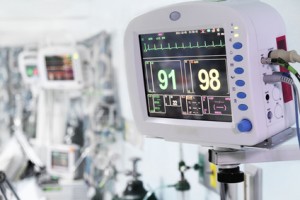
maska82/ Fotolia
As nurses, we are sometimes guilty of making a little too much noise, especially at shift change when our numbers temporarily swell, and during the night when we are attempting to stay awake using any means at our disposal. Sometimes noise is not entirely our fault, such as when a confused patient cries out in the night, oblivious to others who are trying to rest. Let’s face it — hospitals can be noisy places, and while certain noises can be controlled, others cannot.
Some areas are understandably noisier than others. Newborn nurseries can be loud, especially when several infants are vying for attention at the same time. The emergency room can be a very noisy environment, usually full to overflowing with multiple patients in extremis.
Patients in the ICU are exposed to not only the noise emanating from other patients, but from a variety of equipment that beeps, honks, rings and clangs — it’s enough to drive anyone mad! So how do patients perceive the noises encountered in the ICU? A study from the University of Gothenburg set out to answer this question.
Researchers registered and recorded the level of sound around thirteen seriously ill ICU patients over a full 24-hour period of time. On average, the sound levels around the patients fell between 51 and 55 decibels (dB). How loud is 55 decibels? This level of noise can be compared to lying beside a busy road. This level of sound is approximately 20 decibels higher than the level recommended by the World Health Organization. Worse, the noise level surrounding the study participants sometimes rose to a level of 100 decibels in short bursts.
The patients categorized the noises they experienced as being either positive or negative. The positive noises included staff members chatting quietly among themselves or providing information regarding a patient’s conditions or treatment. These sounds were viewed as comforting and soothing, rather than annoying or bothersome.
Negative sounds were those sounds that were unpredictable and/or uncontrollable. Examples included noises from machinery, other patients or treatments. Sounds that were loud and unidentifiable were also frightening. Sounds even became part of the hallucinatory landscape for one patient in the study. Sudden loud noises were deemed to be more disturbing than a generally loud and constant noise level.
What level of noise is acceptable? The World Health Organization actually recommends a level of 30 decibels for patient rooms. Most of us do not walk around with a sound pressure level meter in our pocket to determine how much noise we are making; however, we should make every effort to provide a quiet, calm and restful environment for our patients. Being in a loud environment is not only unpleasant, but the resulting lack of sleep has been found to have a real impact on health outcomes.
Of course, we are only human and are sometimes guilty of laughing or talking a little too loudly, but on the whole we should be cognizant that sound travels and can reach the ears of patients who are trying to earn that most valuable of commodities in a busy hospital environment — a good night’s sleep.



